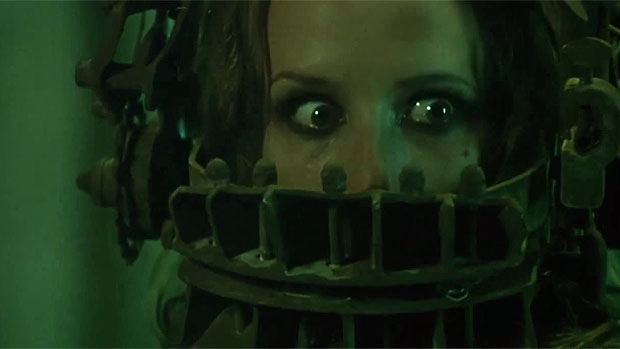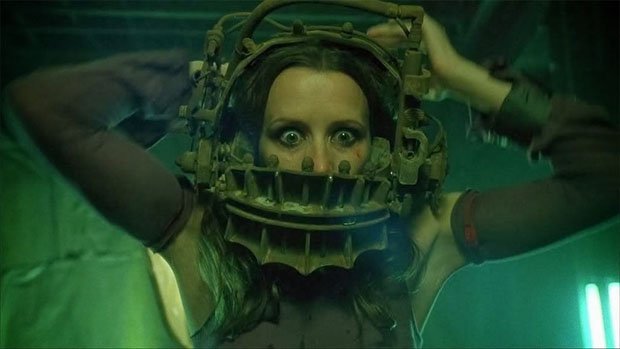How Saw's most iconic death trap ruined the franchise forever
Another Saw is coming. Why? WHY? Well, we know why, because it’s a long-running franchise with a recognizable name and that translates into fairly reliable revenue. Creatively, however, the series ran out of energy several roman numerals ago and is little more than body part Mad Libs now. To be fair, maintaining a series whose iconic villain’s entire shtick is driven by his terminal illness is no small feat, but Jigsaw’s cancer isn’t what truly triggered the demise of Saw’s potential as a smart, vicious horror mainstay. That honor belongs to the reverse bear trap.

You probably haven’t watched the original Saw in quite some time, but it was quite unlike the many sequels it spawned. It was a character-driven drama with some horrific elements, but ultimately it said something. The horror comes not from Cary Elwes hacking off his foot - done conspicuously off camera, I might add - but from asking yourself how far you would go to save your life, or the lives of those you love. We lead very comfortable lives, content to plod along in our own mundane way because we are so rarely pushed to do anything more. Jigsaw’s own life is coming to an end and he is pissed. Why does he have to die when these unappreciative jerks get to live? And so he sets out to teach his lessons. It’s a simple, wicked premise that resonates with every viewer as they examine their own lives. Are they really living them to their fullest? Probably not, which means they’d be up for some schooling from Jigsaw themselves. A prospect made all the more terrifying by the realization that you probably deserve it too.
The few traps shown in the first Saw are revealed after their victims have completed their journeys through them, and are given very little screen time. There’s just enough to suggest the terror they instilled, but we’re spared long, drawn out shots of skin slicing or bones breaking. The one exception is the reverse bear trap, which we see in flashback as survivor Amanda recounts her tale. It’s actually one of the few faults in Saw, because Jigsaw’s logic breaks down here. Ok, sure, he’s teaching drug addict Amanda to savor life, but what about the guy she kills to get at the key to the trap? What lesson was he supposed to be learning? It’s a small detail that swiftly gets overshadowed by the massive metal cage that will split Amanda’s head wide open should she fail to get it off her head in 60 seconds.

It was a brilliantly designed killing device, creative but simple. Shawnee Smith sold the scene beautifully, despite most of her face being obscured, and the prop itself was so well crafted you could imagine its weight and the taste of rust in her mouth. It’s easy to understand why that image was so useful in selling the movie: other horror films have severed body parts, but the reverse bear trap was unique to Saw. It certainly didn’t hurt that the poster featuring it also had Smith looking suitably terrified, or that it was more palatable than the bloody foot and hand on Saw’s other posters - a handy compromise for squeamish theater owners.
Saw became synonymous with the reverse bear trap, which missed the entire point of Jigsaw’s mission. Sure, he uses traps to impart his beliefs, but they’re just tools used in the furtherance of his teachings. They’re just brushes; his art is getting his victims to regret their lack of gratitude. But philosophy isn’t sexy and it’s hard to put on movie posters, and what audiences really wanted was new, cool ways to punish people. Any semblance of them being poetic justice rapidly dispersed, especially once Jigsaw was well and truly dead. They became more elaborate, more gory, and - most importantly - more difficult to escape. The entire point of Jigsaw’s justice was that his traps could be eluded, so long as you were willing to pay the price, but that ethos quickly went by the wayside as the movies struggled to up the ante with each successive film.

The best horror, by which I mean the kind that really sticks with you, rather than providing a cheap, momentary thrill, is the kind that explores our humanity and morality - or lack thereof. Horror that questions what we think we know about ourselves never gets old or ceases to creep us out, because it gnaws away at the foundations of how we view the world around us. Really well done horror does more than just scare us, it touches our primal center and makes it shiver. Discovering new, outlandish ways to kill people is entertaining, sure, but you can shrug it off and happily go about your business. When the Saw films moved away from Jigsaw’s calling to focus on tricky new traps, they abandoned their potential to be timeless in favor of short-lived cheap thrills.
Jigsaw finally succumbed to his disease in Saw III, which paved the way for a successor to perform his own twist on teaching victims the error of their ways. It’s certainly fair to make the creative leap that his motives - which were pure punishment, no redemption to be had - justified the change in trap design, but it’s hard to believe that inspiration didn’t happen in reverse. The traps needed to be more nasty to keep audiences intrigued, and so we got a villain with less altruistic motives. Each successive movie got more and more violent, and while there were moments of inspiration throughout, most notably in Saw V where had the victims simply worked together, they’d all have survived with barely a scratch between them, by and large the plot became incidental to the death toll. Cynics will shrug and say that’s just how horror movies go, but that’s hard to accept when you rewatch the movie that started the entire franchise and realize its message cuts much deeper than any hacksaw ever could.
Weekly digests, tales from the communities you love, and more
Susan was once Managing Editor US at GamesRadar, but has since gone on to become a skilled freelance journalist, editor, producer, and content manager. She is now 1/3 of @Continuepod, 1/2 of @BeastiesLl, co-founder of @TakeThisOrg, and Apex Editor, Fluid Group.



